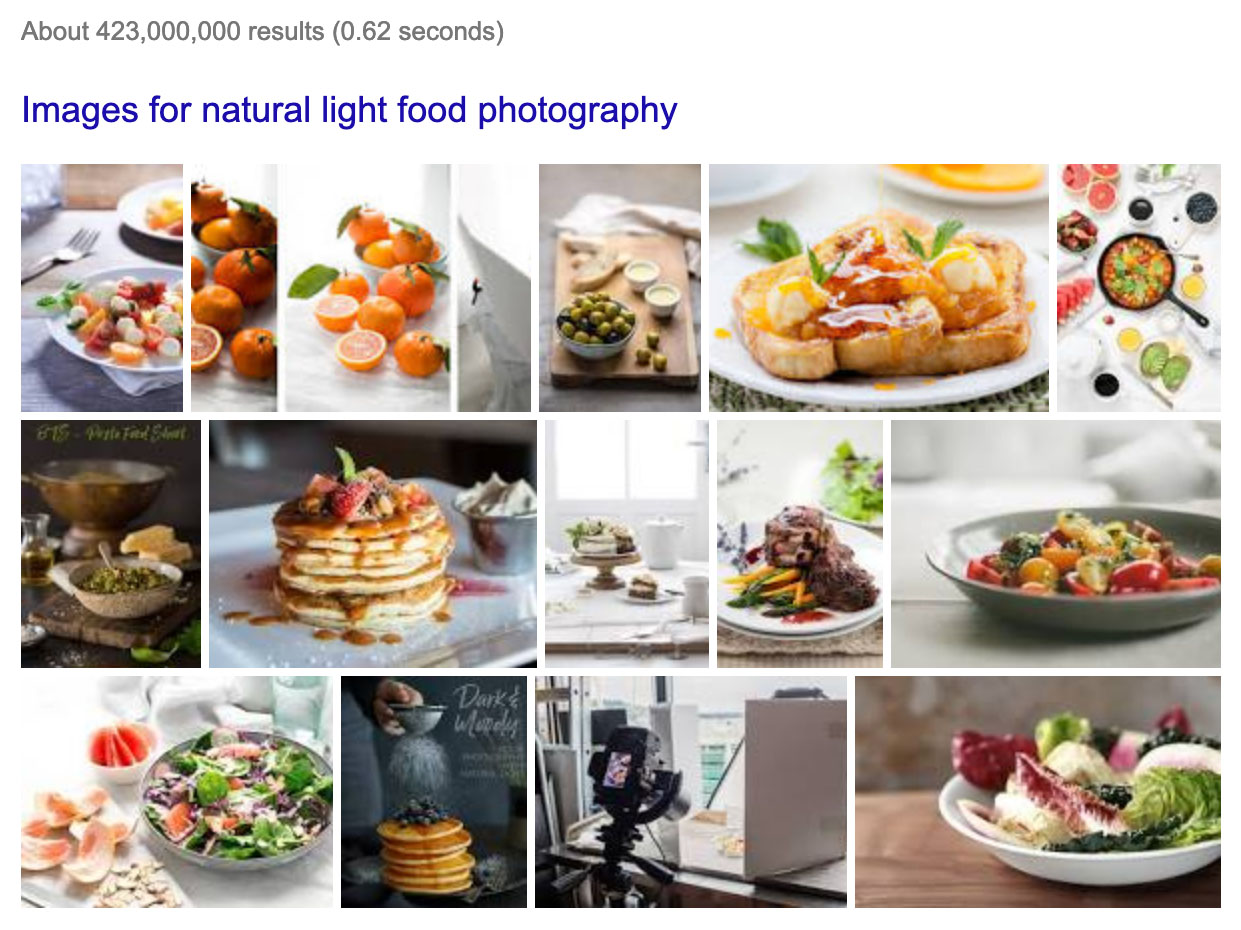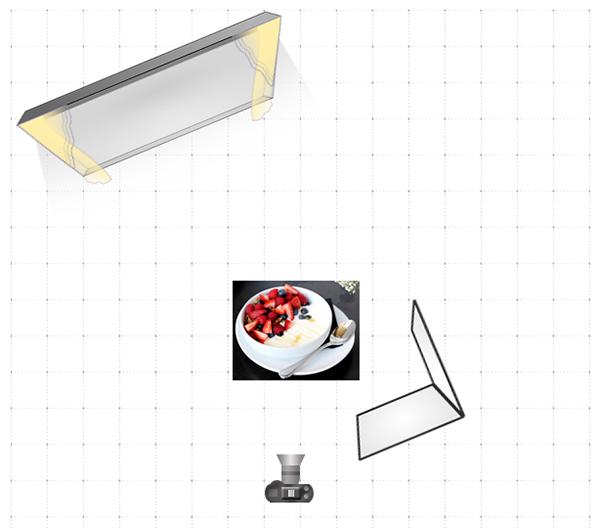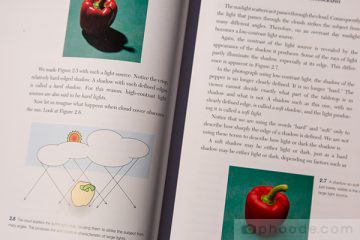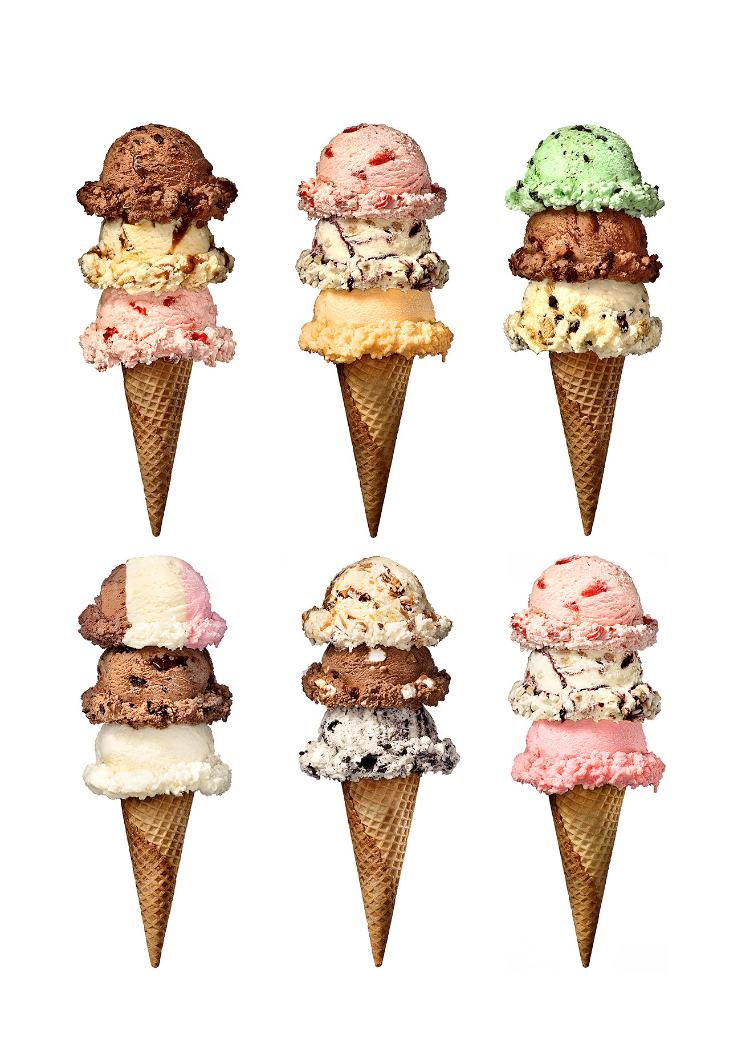The Appeal and Limitations of “Natural Light Food Photography”
Natural light food photography [năchˈər-əl][līt][fo͞od][fə-tŏgˈrə-fē] (n.) – Food photography that does not employ the use of any artificial sources of light. Natural light comes from one source, the sun, although can be diffused and reflected by natural and artificial diffusing elements, such as clouds, umbrellas, reflectors, a white wall, or a just window. Just because light is called natural, it does not mean that the photographer didn’t manipulate it in any way. The effects of natural light can vary widely, from open bright sunlight at a picnic to the interior of a restaurant with large windows at sunset.
Example: “I’m really into natural light food photography, much more than studio food photography. It adds a humbler and more realistic look to food than I can get with strobes and flashes. When I photograph homemade pies and cakes, I always use natural light.”
The Advantageous Qualities of Natural Light
Natural light food photography has some inherent qualities that may make it advantageous for a food photographer to use. First off, it is simple in its form. There are no lighting stands to move around, nor flashes to balance out or pair with your camera. Also, it is typically easier to get color correct shots using natural light. We’ve all heard of bluefin tuna, but usually the meat’s not blue! Fluorescent and tungsten light can be difficult to balance and have strange effects on your photo. It is nothing that someone familiar with white balance and color correction can’t solve, but even professionals can be completely fooled by artificial lighting if not using the proper tools.

Lastly, it is inexpensive and easy to create soft light with natural light, whereas with interior lights and professional studio lighting a lot of extra, often costly equipment and careful balancing is necessary. Even on a bright sunny day a photographer can easily step into a shaded area under some trees or a roof overhang, and find sufficient natural light to evenly illuminate that country style cornbread and BBQ picnic.
How Do Food Photographers Use Natural Light?
In professional and semi-professional natural light food photography, there is almost always a strategy the photographer uses to control and balance the light. A common tip on instructional food photography websites is to shoot the food item or dish by a window with a reflector or bounce/fill card on the opposite side. This is because the window naturally diffuses the light, while the reflector balances by filling in shadows. This gives a very even, soft quality of light that natural light food photography is known for. Food photographers with the luxury to do so sometimes arrange their shoots within 2 hours after sunrise or 2 hours before sunset to make use of the softest manageable light of the day.

What Applications Does Natural Light Food Photography Have?
Natural light food photography is very limiting and unfortunately works only in situations when the lighting consistency, or the way the subject is affected by light throughout the day, isn’t so important. Thus, it will be used mostly for fine art, editorial, or journalistic purposes. If you photograph 100 frames for a stop motion animation, the lighting must be the same during the entirety of the shoot. This is because the project may take the whole day, or even multiple days to complete, making the potential minute-to-minute changes of natural light unsuitable.
When shooting multiple prepackaged food products for the same brand, perhaps for their online store, the brightness of the background and general quality of light mustn’t vary. Natural light will not give you the desired results because it fluctuates. That’s not to say that the look of natural light is not desirable in other sub-genres of food photography. In fact, many big-name food companies hire extremely experienced food photographers to emulate natural light in a studio setting. This allows for long shoots with many food dishes or food products to be professionally executed in an exact manner, yet appear as though it was shot at the perfect time of the day with natural light.

A place where natural light is extensively and often masterfully used is on food blogs. This is because food bloggers, who are quite often natural food photographers with a profound understanding of food and food aesthetics, sometimes lack the knowledge, experience, or equipment necessary to produce well-balanced studio lighting schemes. For them, natural light food photography can produce great traditional looks with accurate colors, provided that the camera’s white balance is set correctly or at least on auto.
Graphic high contrast photographs can also be created in bright natural sunlight (hard light), a style that could fit perfectly with any project. The razor-sharp edge of the shadows in daylight is very hard to replicate in the studio without expensive modifiers. Fresnel lights function like the focused bright beams emitted from lighthouses, and can be used to mimic the bright light of the sun. On the whole, natural light is extremely difficult to accurately imitate, versatile in its applications, yet unreliable for photographic series that must be lit the same throughout.
Do you love using natural light food photography? Use the comments below to tell us why. Or, request more definitions of food photography specific lingo on Phoode’s contact page.









